Rust Programming
Advanced Rust Concepts
Box Single Ownership and Heap Allocation
In this lesson, we delve into Rust's smart pointers with a focus on one of the most fundamental types: Box<T>. We will explore how Box<T> functions within heap memory management, its role in Rust's ownership model, and the scenarios where employing Box<T> is beneficial.
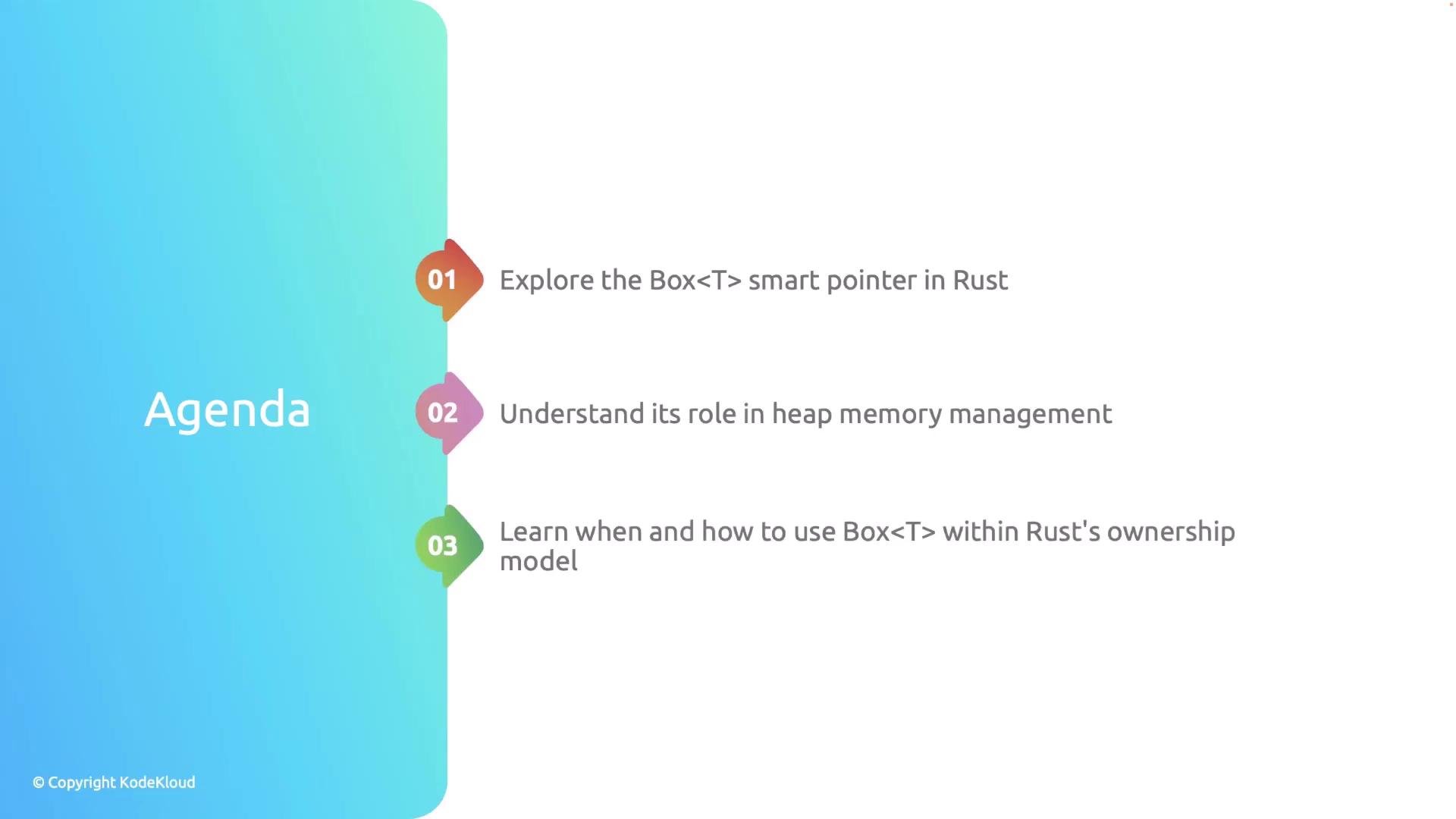
What is Box<T>?
In Rust, a Box<T> is a smart pointer used to allocate data on the heap rather than the stack. Unlike the stack, which stores data in a fast, last in, first out manner but is limited in size, the heap offers a larger memory region that handles dynamic allocation with a slight performance trade-off.
Using Box<T> ensures that the data it points to has a single owner at any time. This enforcement helps prevent common memory management bugs such as memory leaks and dangling pointers, as the associated heap memory is freed when its owner goes out of scope.

When you create a Box<T>, Rust allocates memory on the heap to store the value, while the Box<T> itself remains on the stack holding a pointer to that dynamically allocated memory.
A Simple Example
Below is a basic example where Box::new is used to create a new Box that stores the integer 5 on the heap. Rust takes care of deallocating the heap memory when the variable goes out of scope.
fn main() {
let x = Box::new(5);
println!("x = {}", x);
}
Why Use Box<T>?
Box<T> offers several advantages:
- Heap Allocation: Ideal for moving large data structures off the stack.
- Recursive Data Structures: Useful when dealing with recursive types, as Rust requires each type's size to be known at compile time.
- Single Ownership: Ensures memory safety by enforcing a single owner policy, reducing risks like memory leaks.
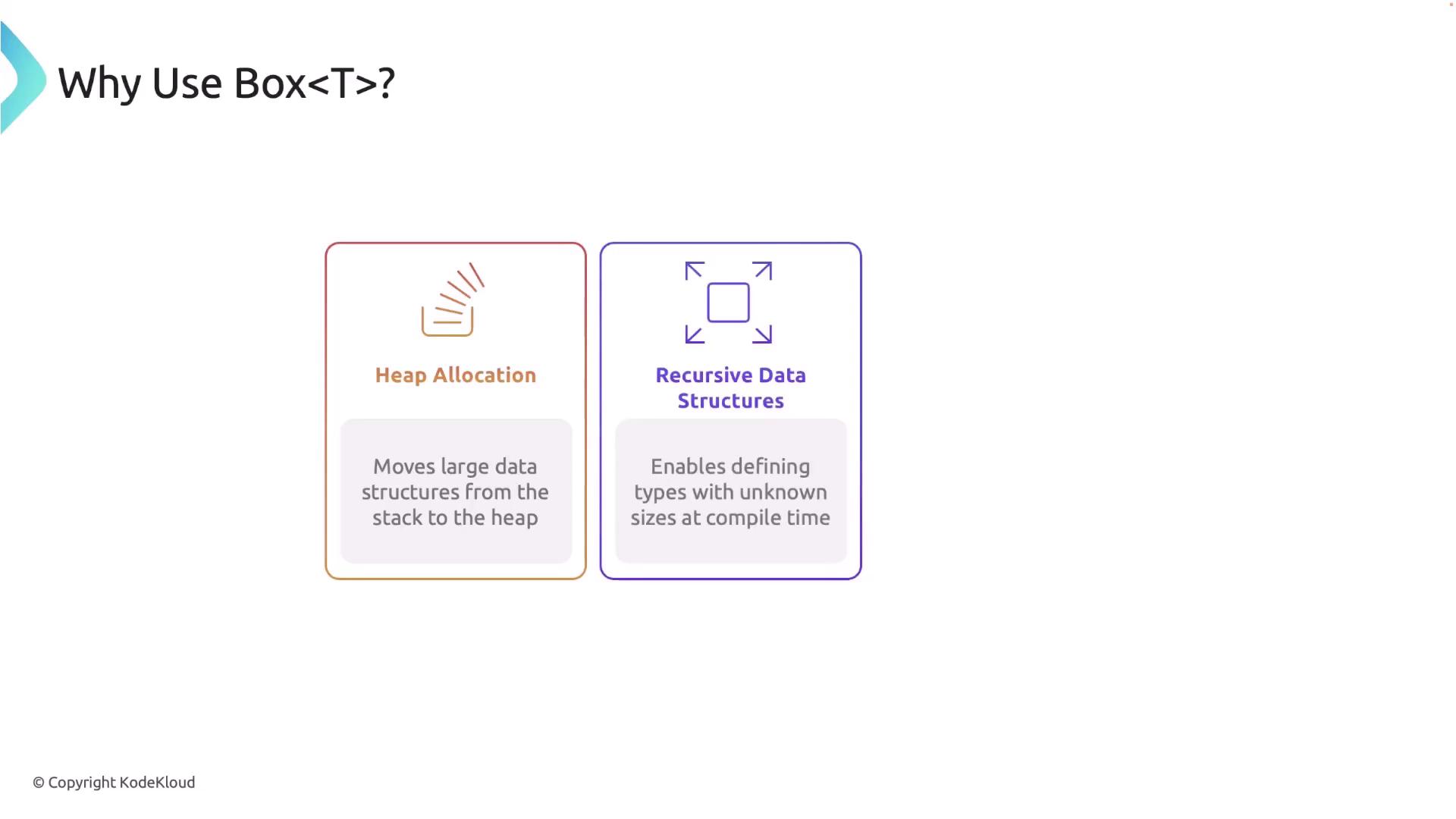
Recursive Data Structures and Box<T>
When implementing recursive data structures like linked lists, direct self-references are problematic because the compiler must know the size of the type. Box<T> solves this by providing a layer of indirection with a fixed-size pointer.
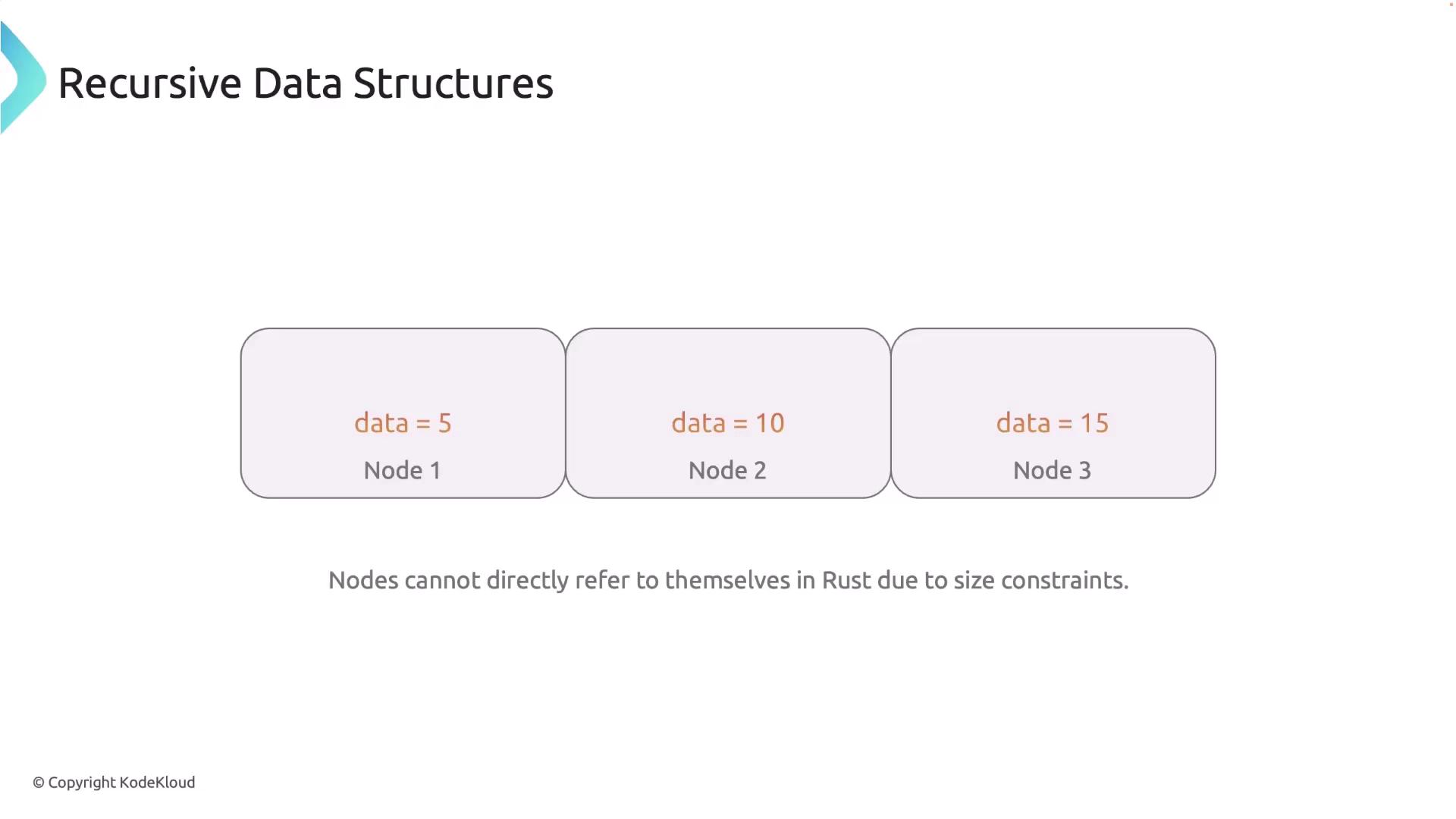
Example: Defining a Linked List
Consider the following implementation of a linked list using an enum. The Box pointer facilitates recursion by wrapping the recursive element:
#[derive(Debug)]
enum List {
Cons(i32, Box<List>),
Nil,
}
fn main() {
let list: List = List::Cons(1, Box::new(List::Cons(2, Box::new(List::Nil))));
println!("{:?}", list);
}
In this structure:
- The
Consvariant holds an integer and a Box that points to the next element in the list. - The
Nilvariant signifies the end of the list.
Without using Box<T>, a recursive type definition would trigger a compile-time error:
#[derive(Debug)]
enum List {
Cons(i32, List), // direct recursion without indirection
Nil,
}
Attempting to compile the above code results in an error like the one below:
cargo run --quiet
error[E0072]: recursive type `List` has infinite size
--> src/main.rs:2:1
|
2 | enum List {
| ^^^^^^^^^^
|
help: insert some indirection (e.g., a `Box`, `Rc`, or `&`) to break the cycle
|
3 | Cons(i32, Box<List>), // direct recursion
Important
Wrapping recursive calls in a Box<T> provides a fixed-size pointer, resolving the infinite size issue and allowing the recursive type to compile successfully.
Revised Code Using Box<T>
Here is the corrected version using Box<T>:
#[derive(Debug)]
enum List {
Cons(i32, Box<List>),
Nil,
}
fn main() {
let list: List = List::Cons(1, Box::new(List::Cons(2, Box::new(List::Nil))));
println!("{:?}", list);
}
In this revised code:
- The first node contains the value 1 and points to the next node using a Box.
- The second node contains the value 2 and terminates the list with
Nil.
Ownership with Box<T>
Rust's ownership model guarantees that data has a single owner at any given time. Take a look at the following example demonstrating ownership transfer with Box<T>:
fn main() {
let b = Box::new(10);
let b2 = b;
// println!("{}", b); // This line would cause a compile-time error because ownership of b has been moved to b2
}
In this example, the ownership of the Box containing the integer 10 is transferred from b to b2. Any attempt to use b after the ownership transfer results in a compile-time error, ensuring memory safety and preventing data races.
When Not to Use Box<T>
While Box<T> is a powerful tool, it is not the right choice for every scenario. Consider the following alternatives when applicable:
- For shared ownership, use
Rc<T>. - For multi-threaded scenarios requiring shared ownership, consider
Arc<T>. - When interior mutability is needed,
RefCell<T>might be more appropriate. - In performance-sensitive sections, be aware that heap allocation is slower than stack allocation.
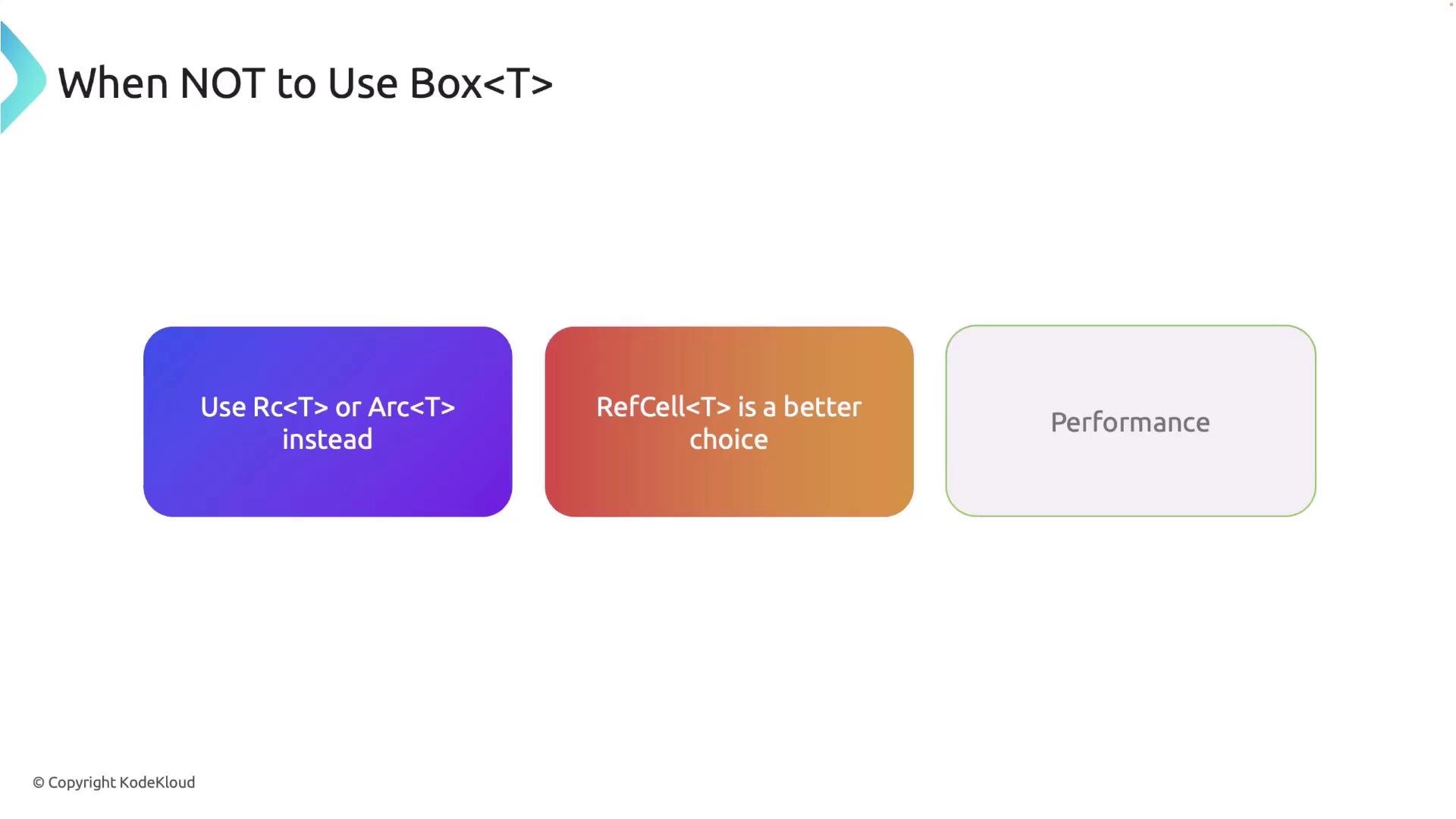
Summary
Box<T> is a crucial component of Rust's memory management toolkit. It provides:
- Safe heap allocation,
- Single ownership for robust memory management,
- The capability to define recursive data structures with unknown sizes at compile time.
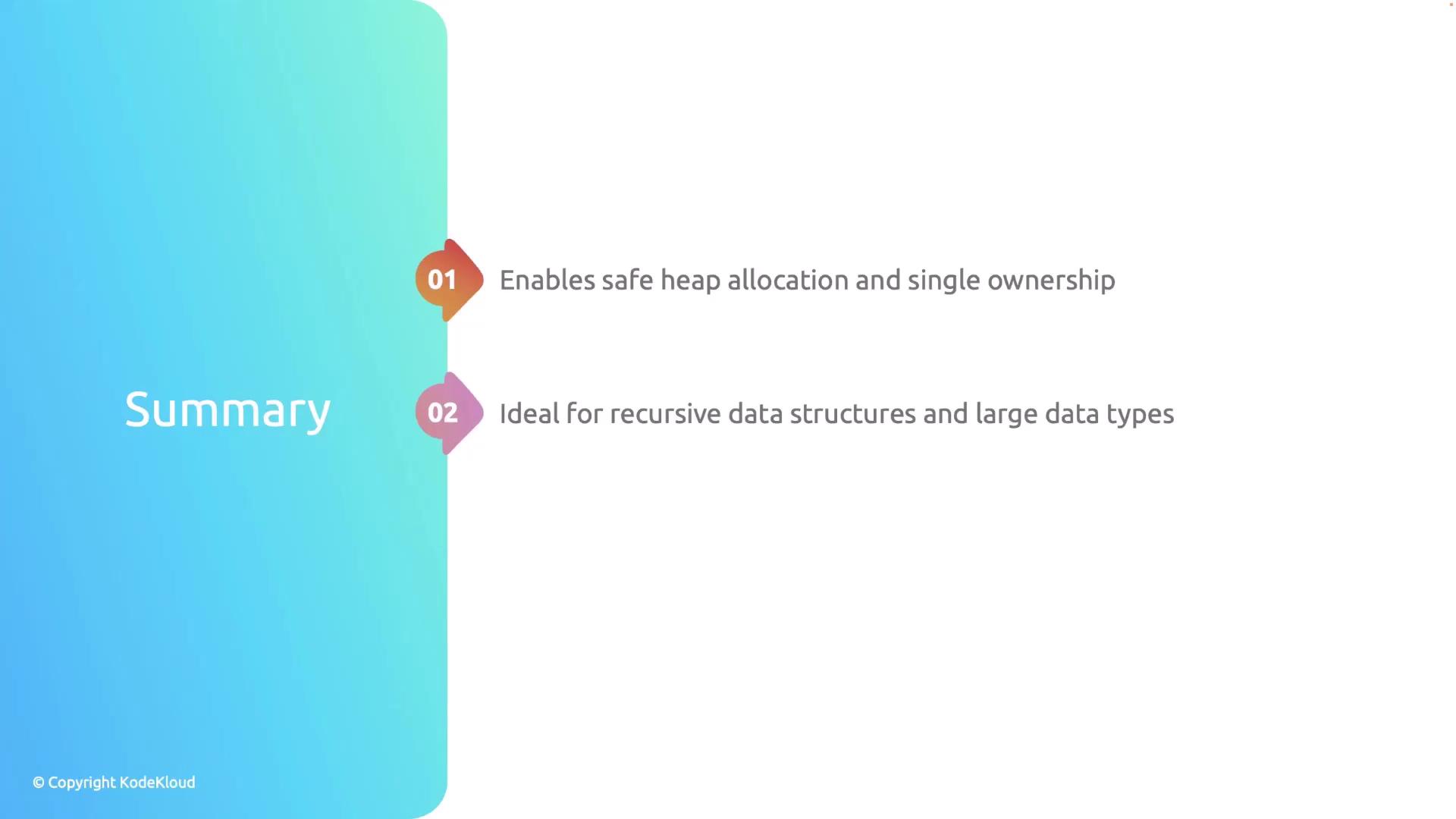
Mastering Box<T> is an essential step towards building more complex and efficient applications in Rust, empowering you to leverage safe memory management and powerful data structure definitions.
Watch Video
Watch video content